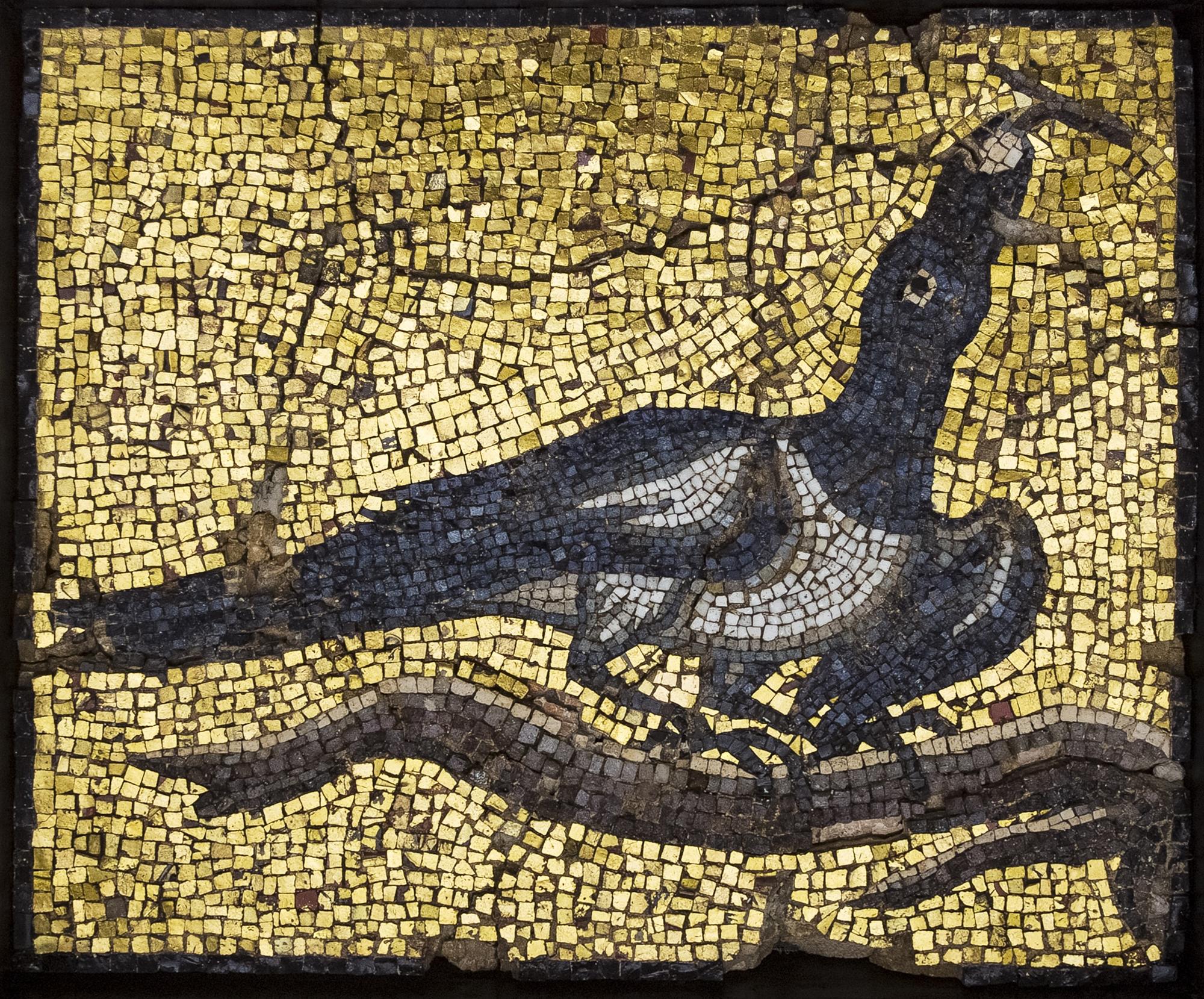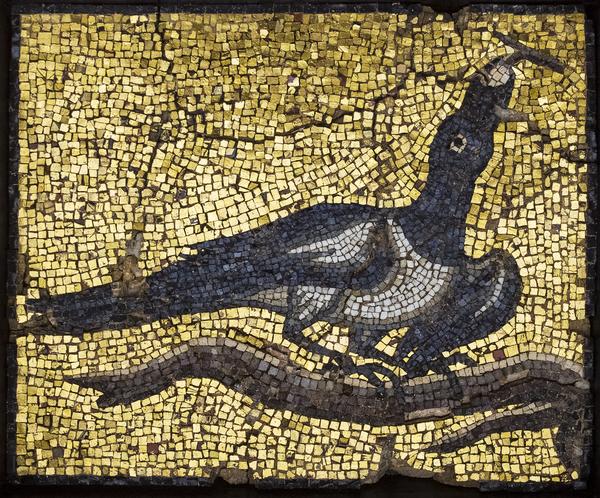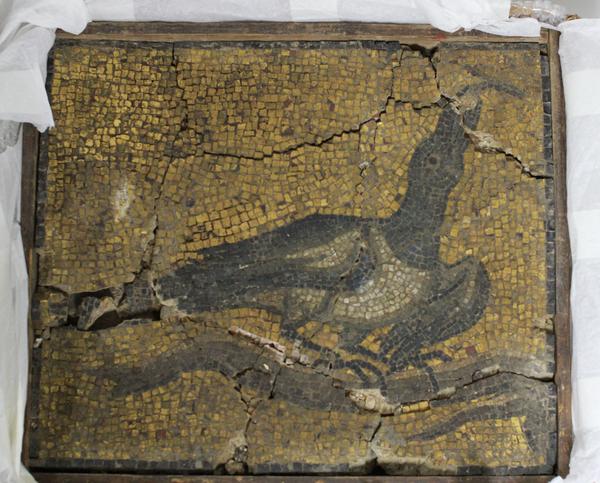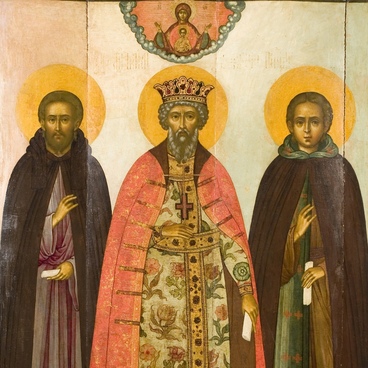The mosaic panel of the 6th century made by the Byzantine artist is the oldest exhibit item in the Tver Regional Art Gallery. Such mosaics were invented at these territories. It was the Byzantines who learnt to create smalt by adding different infusions into the liquid glass melt (gold, mercury, aerugo). With the help of different instruments the pieces of glass were shaped, usually into simple geometric forms. Byzantine mosaic is famous for its golden background and mostly decorative function. The second feature is the outlined profiles of the depicted images. Mosaics are usually not vulnerable to aging and natural destruction.
The panels similar to the featured one were usually parts of the bigger collections used for decorating the walls and the floors at the rich households. The mosaic’s plot is curious. It is possible that the panel reveals the antique legend. According to it, the crow was sent by Apollo for water, but on the way it saw a tree with immature fig and started to wait for the fruits to mellow. As a punishment God put the bird between two constellations and turned it into the Corvus constellation. There it is doomed to always suffer from thirst. The crow dreams of drinking from the cup (Crater constellation), but the water snake (Hydra or Aquarius constellation) doesn’t let it. The crow holds a valuable place in many different religious faiths. It eats both vegetal food and carrion and is interpreted as a creature making the connection between the world of living and the world of dead.
Allegedly the mosaic was created at the Northern African territory. This bird’s habitat includes this continent as well. The image’s realism tells about the artist’s professionalism. The mosaicist knew well the crow’s image and behaviour, he was able to catch the bird’s way of moving.
The featured mosaic was renovated in 2016. Till that time the panel was damaged and had the cracks, smalt losses, impurities. The process of mosaics’ renovation was very complicated and long. Picking the precise tones required high skilled mosaicist.
The panels similar to the featured one were usually parts of the bigger collections used for decorating the walls and the floors at the rich households. The mosaic’s plot is curious. It is possible that the panel reveals the antique legend. According to it, the crow was sent by Apollo for water, but on the way it saw a tree with immature fig and started to wait for the fruits to mellow. As a punishment God put the bird between two constellations and turned it into the Corvus constellation. There it is doomed to always suffer from thirst. The crow dreams of drinking from the cup (Crater constellation), but the water snake (Hydra or Aquarius constellation) doesn’t let it. The crow holds a valuable place in many different religious faiths. It eats both vegetal food and carrion and is interpreted as a creature making the connection between the world of living and the world of dead.
Allegedly the mosaic was created at the Northern African territory. This bird’s habitat includes this continent as well. The image’s realism tells about the artist’s professionalism. The mosaicist knew well the crow’s image and behaviour, he was able to catch the bird’s way of moving.
The featured mosaic was renovated in 2016. Till that time the panel was damaged and had the cracks, smalt losses, impurities. The process of mosaics’ renovation was very complicated and long. Picking the precise tones required high skilled mosaicist.




